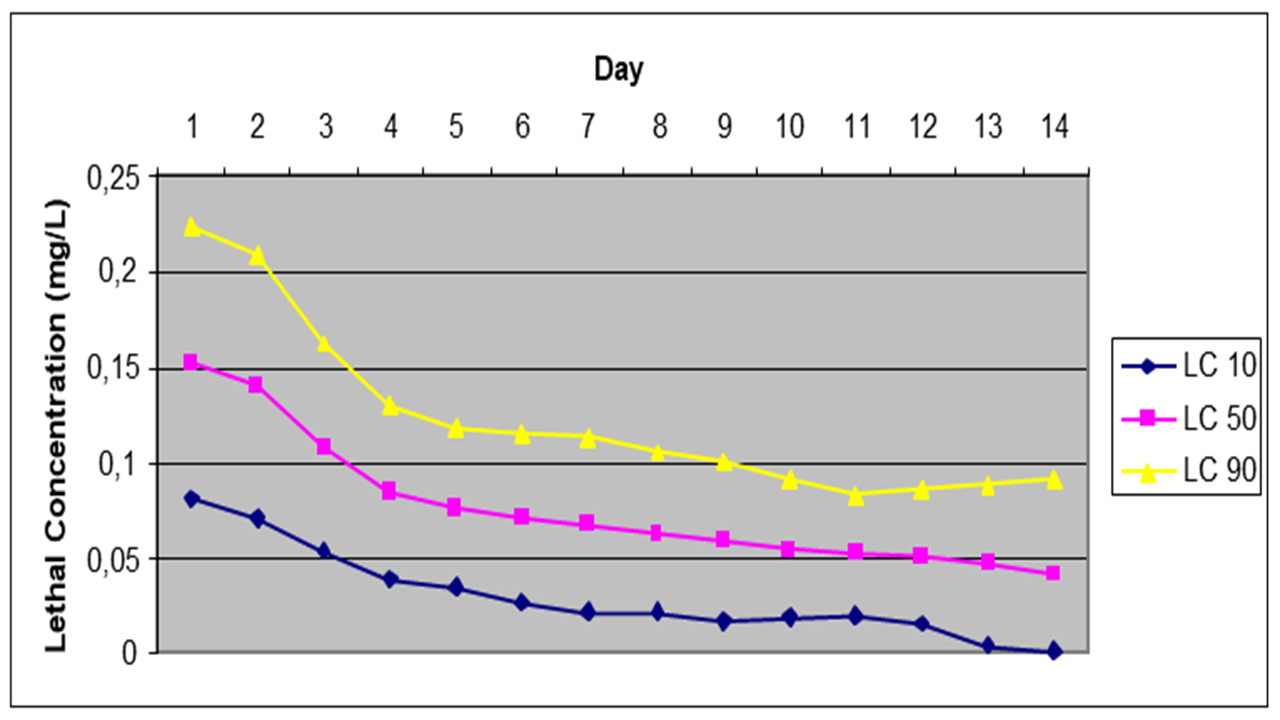Zeynep Mina Uğurtan, Ferah Sayim
Abstract
Amphibians are being increasingly used for toxicity screening purposes and are often considered as sensitive indicator organisms of possible adverse effects of environmental contaminants because of their permeable skins and bi-phasic life cycle. As a reliable and realistic amphibian model, employing ecological relevant species of Türkiye for evaluating the potential risks of xenobiotics does not exist, this toxicological study has been aimed to present a modified amphibian toxicity test model with Bombina bombina that acute, subchronic and chronic effects of Cu+2 have been evaluated. The modified ecotoxicological test model with native species of Türkiye was described and termed as “BOMBITOX” for the first time. Fertilized eggs obtained by intralymphatic administration of hCG. Observations and quantitative estimations were done on the breeding biology of B. bombina in captivty. Early embryonic development of B. bombina was inspected at 21±1 °C. Toxicity tests were performed at 15 h light/9 h dark cycle and 21 1 °C. Test solutions were renewed every other day. This study revealed that mean clutch size was 104 eggs, the mean egg sizes with and without jelly capsule were 2.05 and 1.50 mm respectively, the embryos generally hatched 6th day and 22nd stage, and the average hatching length was 7.76 mm. The staged series with morphological characteristics and time data specific to B. bombina early embryonic development are determined. Cu+2 concentrations representing LC10, LC50, and LC90 from 24 h to 14 days were also obtained and plotted as toxicity profile curves for embryo and larval toxicity tests. NOEC values were 0.04, 0.005 and 0.02, 0.01 mg/L for 96 h, 7 days embryo and larval toxicity test, respectively. Cu+2 caused reduced growth rates and delay in developmental stages achieved. Shedding of epithelial cells, edema and malformations such as axial abnormalities, tail flexure, and wavy tail fin were observed in the exposed groups of embryo and larval toxicity tests. TI values for embryo toxicity tests was calculated as 2.06. The experimental animals exposed to Cu+2 showed toxicity signs such as hyperactivity symptoms and poor swimming ability. It can be concluded that BOMBITOX, the modified ecotoxicological test model with native species of Türkiye, was found to be useful in testing developmental toxicity of heavy metals and meet both ecologic and economic criteria.
